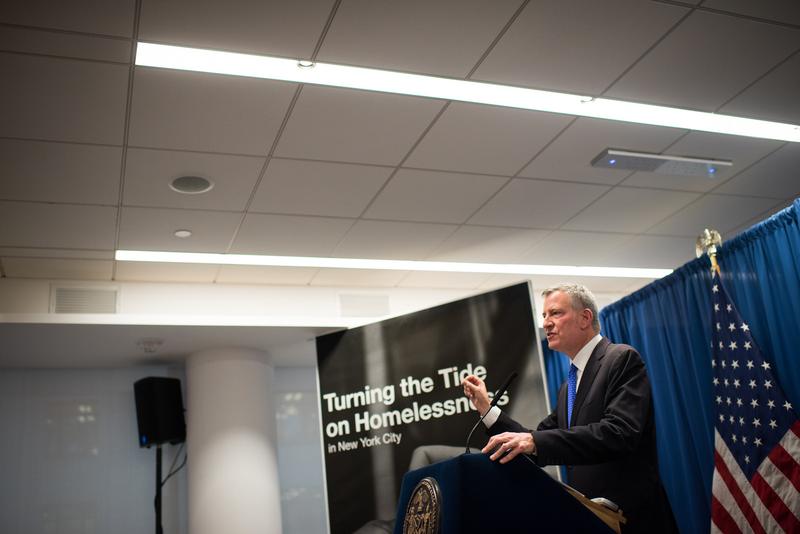
After winning the mayoral election, Bill de Blasio promised to immediately address the unprecedented homeless crisis underway.
“We have the highest number of people in shelter in the history of this city,” he said in December, 2013. “The highest number of people who are homeless in any sense literally since the Great Depression. And it simply can’t continue.”
At that point, 51,018 New Yorkers were homeless.
As mayor, de Blasio promised to use a different strategy to tackle homelessness. But since he came into office, the number of people in the shelter system has increased by 17 percent. Currently, more than 60,000 people live in shelters. Meanwhile, the Department of Homeless Services’ budget has ballooned from $900 million to $1.6 billion.
“This mayor has invested more money than anyone in a very long time in the problem,” Lilliam Barrios-Paoli, de Blasio’s former Deputy Mayor for Health and Human Services, said in a recent interview with WNYC. “I don't think he's gotten the results that he thought or hoped he was going to get.”
Barrios-Paoli said that de Blasio believed his readiness to spend more money and his deep compassion for the homeless would bring about change.
“We were very naive when we came in,” she said. “I, at least, thought that you could solve the problem in an easier way.”
Back in 2011, the state and the city eliminated rental subsidies homeless families were using to get out of the system, and the shelter population skyrocketed. De Blasio brought them back in 2014. In theory, subsidies are a very effective way of moving homeless families from shelters to permanent housing. After they find an apartment, they contribute 30 percent of their income every month, and the city covers the remaining rent they owe.
But Barrios-Paoli said the administration wasn’t prepared for the difficulty of placing families. When Mayor Mike Bloomberg ended his subsidy program six years ago, many landlords got burned when they were left with thousands of tenants who couldn’t pay rent; they didn’t want to give de Blasio’s subsidies a try.
“In such a tight market they can choose who they rent to,” Barrios-Paoli said. “Would you rent to a person that has a subsidy that may go away or would you rent to somebody who works?”
Under de Blasio, many more New Yorkers who were at risk of becoming homeless received assistance than before. Last year, 55,578 people got their rent arrears paid and 16,702 received legal assistance in Housing Court.
Even with those measures in place, 100,000 people entered the shelter system over the past three years. Some get back on their feet and find housing on their own, but most need help. When subsidies don’t work as well as expected, the number of people in shelters grows higher and higher.
“I today cannot see an end,” a chastened de Blasio said of the homelessness problem in February, as he announced a new plan.
The mayor said the city will build 90 new shelters over the five years and place them closer to the neighborhoods where homeless people are coming from. That way, they can stay closer to their support networks and stabilize their lives. Some experts say the mayor is giving up on reducing homelessness, and just managing it. Others think the modest goal he set—reducing the shelter population by 2,500 within four years—is simply realism.
“Is it a gloryful goal? Is it everything we want it to be? No,” de Blasio said that day. “It’s the honest goal.”
